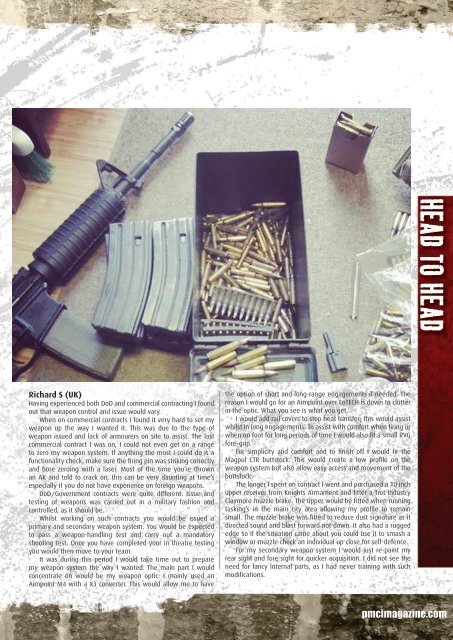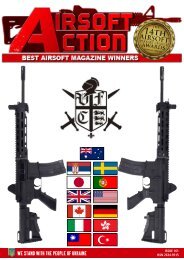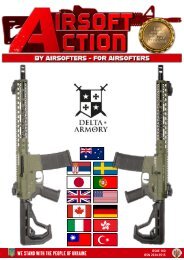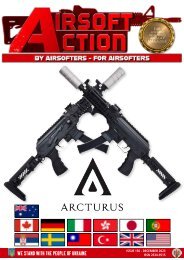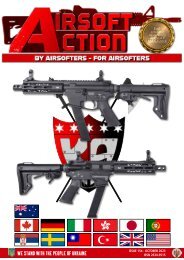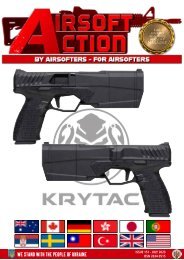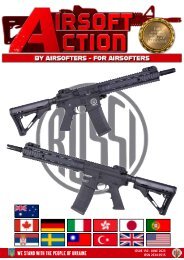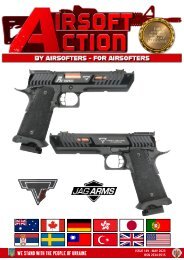PMCI - May 2016
Welcome to the May 2016 Issue of PMCI - the only magazine dedicated to the PMC sector. In this issue we take a look at "SimGun", which brings training close to reality but without the risks. We also speak to EUSECA UK about how to deal with the dreaded "active shooter" scenario. Kit-wise, we get together with Helikon-Tex to check out their latest products and meet British brand "Bulldog" to take a look at their "bomber tough" tactical gear. We also get our hands on some stunning new helmet models from Armorsource and PMCI Editor, Bill, brings us his take on the tactical area at the 2016 IWA show in Nuremberg. Not forgetting firearms, we see what happens when you take a well-known handgun and add some custom parts, while our two "tame" contractors discuss how they prepare their primary when they get in-country. We also welcome new contributor "Chalky" White to PMCI, as he gives us some tips on how to get the very best from your contract-issued AK.
Welcome to the May 2016 Issue of PMCI - the only magazine dedicated to the PMC sector.
In this issue we take a look at "SimGun", which brings training close to reality but without the risks. We also speak to EUSECA UK about how to deal with the dreaded "active shooter" scenario.
Kit-wise, we get together with Helikon-Tex to check out their latest products and meet British brand "Bulldog" to take a look at their "bomber tough" tactical gear. We also get our hands on some stunning new helmet models from Armorsource and PMCI Editor, Bill, brings us his take on the tactical area at the 2016 IWA show in Nuremberg.
Not forgetting firearms, we see what happens when you take a well-known handgun and add some custom parts, while our two "tame" contractors discuss how they prepare their primary when they get in-country. We also welcome new contributor "Chalky" White to PMCI, as he gives us some tips on how to get the very best from your contract-issued AK.
You also want an ePaper? Increase the reach of your titles
YUMPU automatically turns print PDFs into web optimized ePapers that Google loves.
HEAD TO HEAD<br />
Richard S (UK)<br />
Having experienced both DoD and commercial contracting I found<br />
out that weapon control and issue would vary.<br />
When on commercial contracts I found it very hard to set my<br />
weapon up the way I wanted it. This was due to the type of<br />
weapon issued and lack of armourers on site to assist. The last<br />
commercial contract I was on, I could not even get on a range<br />
to zero my weapon system. If anything the most I could do is a<br />
functionality check, make sure the firing pin was striking correctly<br />
and bore zeroing with a laser. Most of the time you’re thrown<br />
an AK and told to crack on, this can be very daunting at time’s<br />
especially if you do not have experience on foreign weapons.<br />
DoD/Government contracts were quite different. Issue and<br />
testing of weapons was carried out in a military fashion and<br />
controlled, as it should be.<br />
Whilst working on such contracts you would be issued a<br />
primary and secondary weapon system. You would be expected<br />
to pass a weapon-handling test and carry out a mandatory<br />
shooting test. Once you have completed your in theatre testing<br />
you would then move to your team.<br />
It was during this period I would take time out to prepare<br />
my weapon system the way I wanted. The main part I would<br />
concentrate on would be my weapon optic. I mainly used an<br />
Aimpoint M4 with a X3 converter. This would allow me to have<br />
the option of short and long-range engagements if needed. The<br />
reason I would go for an Aimpoint over EoTECH is down to clutter<br />
in the optic. What you see is what you get.<br />
I would add rail covers to stop heat transfer; this would assist<br />
whilst in long engagements. To assist with comfort when firing or<br />
when on foot for long periods of time I would also fit a small RVG<br />
fore-grip.<br />
For simplicity and comfort and to finish off I would fir the<br />
Magpul CTR buttstock. This would create a low profile on the<br />
weapon system but also allow easy access and movement of the<br />
buttstock.<br />
The longer I spent on contract I went and purchased a 10 inch<br />
upper receiver from Knights Armament and fitter a Trot Industry<br />
Claymore muzzle brake. The upper would be fitted when running<br />
tasking’s in the main city area allowing my profile to remain<br />
small. The muzzle brake was fitted to reduce dust signature as it<br />
directed sound and blast forward not down. It also had a rugged<br />
edge so if the situation came about you could use it to smash a<br />
window or muzzle check an individual up close for self-defence.<br />
For my secondary weapon system I would just re-paint my<br />
rear sight and fore sight for quicker acquisition. I did not see the<br />
need for fancy internal parts, as I had never training with such<br />
modifications.<br />
pmcimagazine.com


